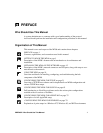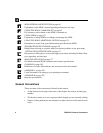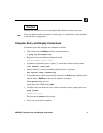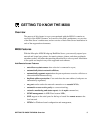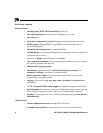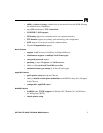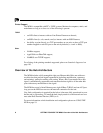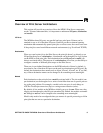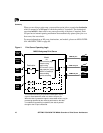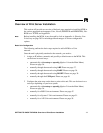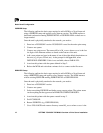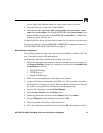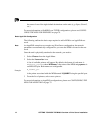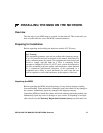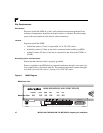
GETTING TO KNOW THE M208: Overview of Print Server Architecture 9
Overview of Print Server Architecture
This section will provide an overview of how the M208’s Print Server component
works. To better understand this, it is important to understand I/O ports, destinations
and models.
I/O Ports
The M208 has three I/O ports; one parallel and two serial ports. Printers can be
attached to any or all of the three I/O ports. Each I/O port has an internal queuing
mechanism that automatically queues print jobs on a first-come, first-serve basis even
if the print jobs come from different network environments (e.g. Novell and TCP/IP).
Destinations
When you send a print job to the Print Server, the print job doesn’t go directly to an
I/O port but first goes to a destination. A destination can be thought of as logical place
on the M208 to send print jobs. Each destination has an I/O port and a model (see
below) associated with it. The purpose of our destinations is to allow you the ability to
configure a number of different print setups on the Print Server.
There are six pre-defined destinations on the M208 and each of them, by default, is
associated to one of the three I/O ports on the unit (two destinations per I/O port). By
default, the destinations have names such as d1prn, d2com1, d3com2, etc. If you like,
any of these destination names can be changed to be something more meaningful.
Models
Each destination on the unit also has a model associated with it. The six models (one
per destination) can be thought of as a series of mini-filter that can do special process-
ing to the print job data. For example, a model can be set up to do such things as
ASCII to PostScript conversion (a2ps) or carriage return insertion (onlcr).
By default, all six models on the M208 are initially set up to be raw. When raw, they
simply pass data through to the I/O port untouched. By default, the models are named
m1 through to m6 but can be changed to be something more meaningful.
Models only need to be reconfigured when you want to do special processing to all the
print jobs that are sent to a particular destination.



